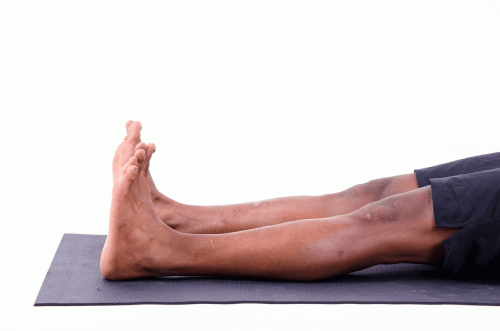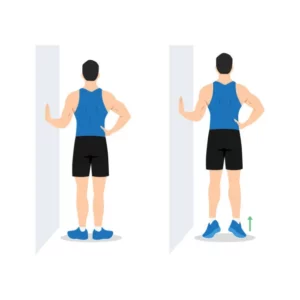A swollen knee can be more than just a physical concern; it can disrupt your routine, hinder your mobility, and hamper your daily activities. Imagine the discomfort of dealing with a knee that feels heavy, tender, and limited in its movement. Whether triggered by an injury, an underlying condition, or even overuse, the swelling in your knee demands attention and care. In this blog, we will delve into the world of swollen knees, exploring their causes and providing insights into effective treatment options.
Contents
Understanding Swollen Knees
Knee discomfort can vary from a minor problem to a significant disruption in our daily lives. Among all the knee-related issues, swollen knees are one of the most common concerns. And if this problem is left unchecked, it could worsen causing your knee to feel larger, tender to the touch, and perhaps warmer than usual. This swelling, also known as knee effusion, can be caused by a multitude of factors, each with its own set of implications.
What are the potential causes of swollen knees
Swollen knees can arise from a range of triggers and problems, including:
- Injuries: Falls, Accidents, or sudden impacts can generate a protective inflammatory response in the knee joint. Swelling emerges as the body attempt to shield the area from further harm.
- Arthritis: Both osteoarthritis and rheumatoid arthritis, lead to a common outcome which is joint inflammation. This inflammatory process causes the fluid to accumulate, resulting in the swelling of the knees.
- Bursitis: The bursae, small sacs filled with fluid, provide support to the knees between tendons, muscles, and bones. When these bursae become inflamed, as seen in bursitis, localized swelling occurs, often centered around the knee joint.
- Overuse: The knee’s resilience is tested by repetitive actions, such as excessive physical activity or demanding sports. Overused knees can experience inflammation and swelling as the body reacts to the heightened stress.
- Infections: While infections causing knee swelling are rare, they are noteworthy. An infected knee can lead to pronounced swelling accompanied by warmth, redness, and pain, indicating a more serious underlying issue.
Exercises For Swollen Knees
Engaging in targeted exercises can play a crucial role in managing swollen knees. Make sure to always consult a healthcare professional before starting any exercise routine, especially if you have a pre-existing condition. Let’s explore a range of exercises that can aid in relieving swollen knees.
Ankle Pumps
- Sit or lie down with your legs extended.
- Slowly flex your ankle, pointing your toes away from you.
- Then, flex your ankle in the opposite direction, pointing your toes towards you.
- Repeat this movement about 10-15 times on each leg.
Heel Slides
- Lie on your back with your legs extended.
- Slowly slide one heel towards your buttocks, bending your knee.
- Hold the position for a few seconds, then slide the leg back to the extended position.
- Repeat this movement on each leg for 10-15 repetitions.
Quadriceps Sets
- Sit on the floor with your legs extended.
- Tighten the muscles on the front of your thigh of one leg.
- Press the back of your knee into the floor, straightening your knee as much as possible.
- Hold this contraction for 5-10 seconds, then release. Repeat this for both legs.
Straight Leg Raises
- Lie on your back with one leg extended and the other bent.
- Tighten your quadriceps muscles on the extended leg and lift it a few inches off the ground.
- Hold for a few seconds, then lower the leg back down.
Calf Raises
- Stand with your feet hip-width
 apart, holding onto a stable surface for balance.
apart, holding onto a stable surface for balance. - Rise up onto your toes, lifting your heels off the ground.
- Lower your heels back down to the ground.
Hamstring Curls
- Stand behind a sturdy chair or hold onto a support.
- Bend one knee, bringing your heel towards your buttocks.
- Hold this position for a few seconds, then lower your leg back down.
Effective Treatment Options For Swollen Knees
When faced with swollen knees, finding effective treatment options is essential for relieving discomfort and restoring your ability to move freely. From home remedies to medical interventions, a range of strategies can help alleviate knee swelling and promote healing. Let’s explore these treatment approaches in detail to empower you with the knowledge needed to make informed decisions for your well-being.
R.I.C.E. Method
The R.I.C.E. method—Rest, Ice, Compression, and Elevation—serves as a cornerstone in treating swollen knees:
Providing your knee with ample rest allows the body’s natural healing processes to take place. Applying ice packs to the swollen area for short intervals helps reduce inflammation and numb discomfort. Wearing a compression bandage or knee brace offers support, minimizes swelling, and promotes healing. Elevating your leg above heart level helps prevent fluid accumulation and reduces swelling.
Physical Therapy
Engaging in physical therapy under the guidance of a qualified professional can be immensely beneficial. Tailored exercises help strengthen the muscles around the knee, improve joint stability, and enhance flexibility. Physical therapy also focuses on promoting proper alignment and reducing the risk of future swelling.
Medications
Nonsteroidal anti-inflammatory drugs (NSAIDs), available over the counter or through prescription, can help alleviate pain and reduce inflammation. However, it’s crucial to consult a healthcare professional before using these medications, especially if you have underlying medical conditions.
Lifestyle Modifications
Adjusting your daily routines can have a significant impact on managing swollen knees. This includes maintaining a healthy weight to reduce strain on the knee joint, avoiding activities that exacerbate swelling and practicing proper body mechanics to prevent further damage.
Injections
For situations in which the swelling is persistent, corticosteroid injections may be recommended by a healthcare professional. These injections can provide rapid relief by reducing inflammation within the knee joint.
Aspiration
In some cases, a doctor may perform a procedure called aspiration. This procedure mainly involves draining excess fluid from the swollen knee using a needle. Aspiration can help alleviate discomfort and improve mobility.
Surgical Interventions
It is possible that in some cases, the conventional treatments may prove to be ineffective. In such severe cases, surgical interventions may be considered. Surgical procedures can repair damaged structures, and provide long-term relief from swelling and the pain associated with it.
Underlying Condition Management
If an underlying condition like arthritis is contributing to knee swelling, effective management of that condition becomes integral to treatment. Working closely with healthcare professionals to manage the root cause is essential for long-term relief.
Before embarking on any treatment path, it’s crucial to consult a healthcare professional. Accurate diagnosis and personalized treatment recommendations ensure that your approach aligns with your unique needs and medical history.
Natural Ways To Find Relief For Swollen Knees
Here are a few home remedies that you can easily incorporate into your routine.
R.I.C.E. Method: This mainly involves four steps. Firstly, rest – give your knee a break by avoiding activities that strain it. Applying ice packs wrapped in a cloth to the swollen area for about 15-20 minutes several times a day can help with inflammation and discomfort. Wearing a compression band or knee brace can also help control the swelling. Keeping your legs elevated with a pillow or cushion under your knee while sitting or lying down helps minimize fluid accumulation.
Gentle Knee Exercises: Engaging in low-impact exercises that promote blood circulation and flexibility can help alleviate knee swelling. Activities such as ankle pumps, heel slides, and gentle leg lifts can help maintain joint mobility without putting excessive strain on the knee.
Warm Salt Bath: Soaking your knee in a warm salt bath can provide relaxation and help reduce swelling. Bath salts contain magnesium, which can aid in soothing muscle tension and promoting circulation.
Turmeric: Known for its anti-inflammatory properties, turmeric can be incorporated into your diet or taken as a supplement. Curcumin, a compound found in turmeric, is believed to have natural anti-inflammatory effects that may help alleviate knee swelling.
Ginger Tea: Ginger is recognized for its potential to reduce inflammation. Enjoying ginger tea regularly may contribute to easing knee discomfort and reducing swelling.
Essential Oils: Certain essential oils, such as lavender, chamomile, and eucalyptus, have anti-inflammatory properties. Massaging the affected area with these oils can offer relief.
Stay Hydrated: Maintaining proper hydration is essential for overall health, including joint health. Drinking sufficient water helps your body flush out toxins and supports the body’s natural healing processes.
Anti-Inflammatory Diet: Incorporate foods rich in antioxidants (found in colorful fruits and vegetables), and whole grains to help reduce inflammation.
Long-Term Relief From Swollen Knees
Long-term relief for swollen knees often involves a combination of lifestyle changes, management strategies, and medical interventions. Here are some approaches that might help provide relief:
- Consult a Healthcare Professional: If you’re experiencing persistent or recurrent knee swelling, it’s important to consult a healthcare professional to identify the underlying cause and develop a personalized treatment plan.
- Regular Exercise: Engaging in regular low-impact exercises, such as swimming, cycling, or walking, can help improve joint mobility, strengthen muscles around the knee, and promote overall joint health.
- Strength and Flexibility Exercises: Working with a physical therapist to develop a customized exercise routine can help improve the strength and flexibility of the muscles supporting the knee joint. This can provide stability and reduce the risk of swelling.
- Proper Footwear: Wearing supportive and cushioned footwear can help reduce the impact on your knees while walking and engaging in physical activities.
- Balanced Diet: Consuming a diet rich in anti-inflammatory foods, such as fruits, vegetables, whole grains, lean proteins, and healthy fats, can contribute to reducing overall inflammation in the body.
- Hydration: Staying well-hydrated supports joint health and can help reduce the risk of fluid retention that contributes to swelling.
- Medications: If recommended by your healthcare provider, taking prescribed medications as directed can help manage pain, inflammation, and underlying conditions contributing to knee swelling.
- Joint Protection: Avoid activities that place excessive strain on your knees, and use proper techniques when lifting heavy objects or performing tasks that might aggravate your condition.
- Heat and Cold Therapy: Applying heat or cold to your knee as recommended by your healthcare provider can help alleviate pain and reduce swelling.
- Orthotics and Assistive Devices: Using orthotic inserts or assistive devices like knee braces or crutches, as advised by a medical professional, can provide support and reduce stress on the knee joint.
Conclusion
In conclusion, finding effective treatment for swollen knees is essential for restoring comfort and mobility to your daily life. Whether your knee swelling is caused by an injury, a medical condition, or overuse, there are various strategies and approaches that can provide relief and promote healing.
Remember that while home remedies like (RICE) can be beneficial, consulting a healthcare professional is crucial for an accurate diagnosis and tailored treatment plan. They can help determine the underlying cause of your knee swelling and recommend appropriate interventions.
If you’re experiencing Knee pain, physical therapy for knee pain at PhysioMantra can help: Book an online physical therapy session.





 apart, holding onto a stable surface for balance.
apart, holding onto a stable surface for balance.



